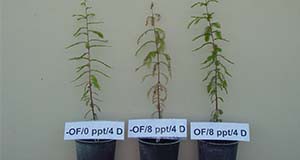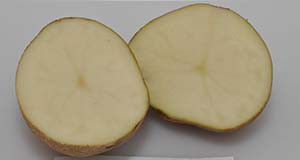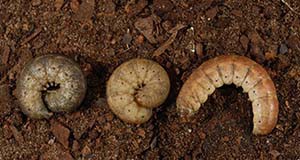
Turfgrass is grown in many environments and for different uses, including home lawns, parks, athletic fields, cemeteries, golf courses, sod farms, pastures, and right-of-ways. The intensity of turfgrass insect management largely depends on the turf species, variety, and its intended use. This eighteen-page fact sheet describes how to manage a variety of insect pests including armyworms, bermudagrass mite, cutworms, fire ants, ground pearls, hunting billbug, mole crickets, scales/mealybugs, southern chinch bug, twolined spittlebugs, tropical sod webworm, and white grubs. Written by Eileen A. Buss and Adam G. Dale, and published by the Entomology and Nematology Department.
http://edis.ifas.ufl.edu/ig001
Author: Allison Nick
Management of Cucurbit Downy Mildew in Florida
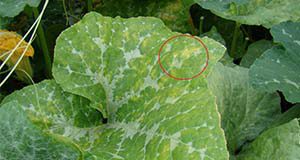
Cucurbit downy mildew is a major disase that affects over 40 species of cucurbits, like watermelon, muskmelon, cucumber, squash, and pumpkin. The classic sign of the disease is the presence of dark sporangia, a structure that holds developing spores, on the underside of infected leaves. As the disease progresses, it may lead to large necrotic areas that cause defoliation and a reduction of yield and marketable fruit. This nine-page fact sheet describes the symptoms and signs, epidemiology and disease cycle, host range and pathotypes, and the ways to manage cucurbit downy mildew. Written by Mason J. Newark, Mathews L. Paret, Nicholas S. Dufault, Pamela D. Roberts, Shouan Zhang, Gary E. Vallad, Josh Freeman, and Gene McAvoy, and published by the Plant Pathology Department.
http://edis.ifas.ufl.edu/pp325
How the General Public and Local Officials Prefer to Learn about Agricultural Water Use in Florida
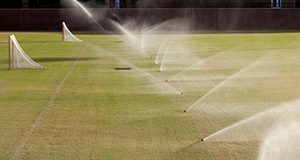
Water is a precious resource that is invaluable to the state of Florida. The amount of water being used daily in the state is estimated at 14.3 million gallons. Part of a series dedicated to describing the preferred ways of learning about agricultural water use in Florida, this study can be used to assist Extension educators and the agricultural industry at large in the development of strategies meant to inform people about the realities of water use. This three-page fact sheet helps Extension educators understand preferred learning mediums so they can provide useful information about agricultural water use. Written by Courtney T. Owens, Alexa J. Lamm, and Ricky W. Telg and published by the Agricultural Education and Communication Department.
http://edis.ifas.ufl.edu/wc247
Landscape Integrated Pest Management
Every landscape manager has a pest management toolbox, which contains tools that represent different management strategies. People can be quick to use pesticides, but an integrated approach using multiple tools can be much safer, have longer lasting beneficial effects, and in some cases cut costs. This 5-page fact sheet will help Extension agents and specialists, lawn and landscape managers, Florida Master Gardeners, and homeowners develop long-term sustainable pest management programs using an Integrated Pest Management (IPM) framework. Written by Adam G. Dale and published by the Department of Entomology and Nematology.
http://edis.ifas.ufl.edu/in109
How to Chemigate Salinity-Stressed Plants with Hydrogen Peroxide to Increase Survival and Growth Rates
Man-made activities can induce climate change and global sea-level rise, posing threats to the survival and growth of coastal vegetation in Florida. This three-page fact sheet explains how to ensure plant survival and facilitate the growth of coastal vegetation threatened by sea-level rise and the resulting oxygen deficiencies and saline stresses. Written by Guodong Liu, Yuncong Li, Kimberly Moore, Kim Gabel, Lei Wu, and Rafael Muñoz-Carpena, and published by the Horticultural Sciences Department.
http://edis.ifas.ufl.edu/hs1280
University of Florida Potato Variety Spotlight: 'Atlantic'
This article introduces the potato variety, ‘Atlantic’, which was tested in trials at the University of Florida.’Atlantic’ is a white-skinned, chipping potato commonly cultivated in Florida and resealed as a white mutant of the USDA breeding program. This three-page fact sheet provides the general characteristics, season length and growth information, fertilization and planting instructions, as well as disease information for the potato variety, ‘Atlantic’. Written by Rodrick Z. Mwatuwa, Christian T. Christensen, and Lincoln Zotarelli, and published by the Horticultural Sciences Department.
http://edis.ifas.ufl.edu/hs1278
Leafy Greens in Hydroponics and Protected Culture for Florida

Leafy greens are some of the top “powerhouse” fruits and vegetables. They are also becoming increasingly more popular for consumers. This seven-page fact sheet is designed to aid Florida hydroponic and/or other protected culture growers who are seeking appropriate cultivars of the leafy greens group. The article covers spinach, Swiss chard, kale, collard greens, mustard greens, and Asian greens. Written by Natalie B. Parkell, Robert C. Hochmuth, and Wanda L. Laughlin and published by the Horticultural Sciences Department.
http://edis.ifas.ufl.edu/hs1279
Pest Strips: You Have to Read the Fine Print
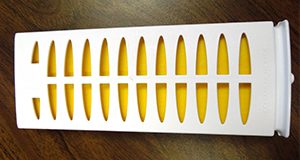
Pest strips are commonly sold at many retail outlets and are available to anyone for purchase. They are constructed of resin plastic with an insecticide that is gradually control-released over time as a vapor. This two-page fact sheets gives important tips on how to use pest strips correctly without creating a hazard.Written by Fred Fishel and published by the Agronomy Department.
http://edis.ifas.ufl.edu/pi262
Integrating Critical Thinking into Extension Programming #5: Using Critical Thinking Styles to Enhance Team Work

The final part of the Integrating Critical Thinking in Extension Programming series, this article continues the discussion of how to take into account critical thinking methods and styles when developing Extension programs. Well-formed working groups allow members to work successfully solve problems as a group. This three-page fact sheet explains the importance of critical thinking styles when it comes to team work. Written by Alexa J. Lamm and published by the Department of Agricultural Education and Communication.
http://edis.ifas.ufl.edu/wc210
Integrating Critical Thinking into Extension Programming #4: Measuring Critical Thinking Styles Using the UFCTI

The fourth installment in the Integrating Critical Thinking into Extension Programming series, this article explains the University of Florida Critical Thinking Inventory (UFCTI), a method of determining a person’s critical thinking style. This three-page fact sheet describes the history and development of the UFCTI, how to interpret the results, and how to use the test to enhance Extension programs. Written by Alexa J. Lamm and published by the Department of Agricultural Education and Communication.
http://edis.ifas.ufl.edu/wc209
University of Florida Potato Variety Spotlight: ‘Marcy’
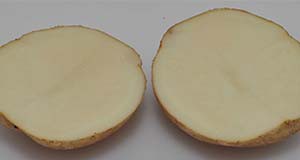
This article introduces the potato variety, ‘Marcy’, which was developed at the University of Florida. ‘Marcy’ is a white-flesh and white-skinned fresh-market potato variety that has demonstrated high yield and good tuber characteristics. This three-page fact sheet provides the general characteristics, season length and growth information, fertilization and planting instructions, as well as disease information for the potato variety, ‘Marcy’.
Written by Rodrick Z. Mwatuwa, Christian T. Christensen, and Lincoln Zotarelli, and published by the Horticultural Sciences Department.
http://edis.ifas.ufl.edu/hs1277
Encouraging Landscape Water-Conservation Behaviors #5: Segmenting the Audience Based on HOA Status

The newest article in the Encouraging Landscape Water-Conservation Behavior series, this six-page fact sheet provides Extension professionals with information on segmenting audiences based on their home owner association status. It provides data that shows how HOA membership potentially affects the barriers that households face when adopting conservation measures and explains how Extension professionals should use this information to enhance programming by strategically planning programs based on the similarities between clients.Written by Laura A. Warner, Alexa J. Lamm, Emmett Martin, Joy N. Rumble, and Esen Momol, and published by the Department of Agricultural Education and Communication.
http://edis.ifas.ufl.edu/wc246
Tong Hao: an Asian Vegetable Emerging in Florida
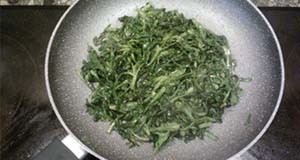
Tong Hao (Glebionis coronaria) is a member of the daisy family and therefore a relative of lettuce. It is an important vegetable in Asian communities. Grown in China for more than 900 years, Tong Hao is a branched annual leafy herb that can be cooked and eaten. This four-page fact sheet provides background information about Tong Hao, including information on growing, harvesting, and cooking it. Written by Guodong Liu, Qingren Wang, Bonnie Wells, Yuncong Li, and David Dinkins, and published by the Horticultural Sciences Department.
http://edis.ifas.ufl.edu/hs1276
Monitoring Leaching Fraction for Irrigation Scheduling in Container Nurseries

Scheduling irrigation in container nurseries can be a daunting task for producers. There is a great risk of under- or over-watering. The leaching fraction (LF) test is a valuable tool for measuring the volume of container drainage collected during irrigation relative to the volume of water entering the container. With this test, producers can adjust their irrigation to maintain a low percentage of leaching. This four-page fact sheet explains how to perform the test, gives example calculations, and provides some suggestions on how to utilize LF testing when managing irrigation. Written by Jeff Million and Tom Yeager, and published by the Environmental Horticulture Department.
http://edis.ifas.ufl.edu/ep529
Potato Vine Killing or Desiccation

Proper tuber maturity at harvest is an important factor in producing high-quality fresh-market potatoes. Tuber maturity is generally recognized as an important determinant of storage ability and cooking quality. Maturation can be artificially induced by killing the potato vines prior to harvest. This will benefit tuber appearance, limit tuber size, and improve tuber release from the vine. This four-page fact sheet describes the importance of tuber maturation, potato vine killing timing and available methods, and how to determine when to vine kill and when to harvest after vine kill. Written by Lincoln Zotarelli, Steven Sargent, Peter Dittmar, and Mildred Makani, and published by the Horticultural Sciences Department.
http://edis.ifas.ufl.edu/hs181
The Green-Spore Poison Parasol Mushroom,Chlorophyllum molybdites
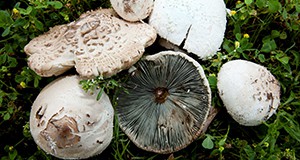
The “false parasol” or “green-spored parasol” mushroom (Chlorophyllum molybdites) is a poisonous mushroom that is the most common cause of mushroom poisoning in the United States. This mushroom is widely distributed throughout Florida and the southeastern United States. It commonly creates a complete or incomplete “fairy ring” in lawns, grassy areas, and open woods. When mature, the green-spored parasol mushroom has a large cap, a ring around its stem, and a greenish color on the underside of its gills. This four-page fact sheet describes the morphology, ecology, and distribution of the green-spored mushroom as well as its toxicology and how to treat poisoning from this mushroom. Written by Lisbeth Espinoza and Matthew E. Smith, and published by the Plant Pathology department.
http://edis.ifas.ufl.edu/pp324
Downy Mildew of Basil in South Florida
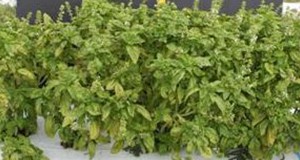
The yellowing of basil leaves could be an indication of the downy mildew of basil disease. This new destructive disease was first detected in south Florida in 2007 and has since spread to at least 42 states in the United States as well as many countries throughout Europe and Africa. This three-page fact sheet describes downy mildew of basil, including its symptoms and ways to control the disease. Written by Shouan Zhang, Jaimin S. Patel, Zelalem Mersha, Pamela D. Roberts, and Richard Raid, and published by the Plant Pathology Department.
http://edis.ifas.ufl.edu/pp271
Pureed Food: Guide to Quick Meals

Puréed foods are an important source of nutrients for those who have problems chewing or swallowing. A puréed food is any item that has been processed into a smooth and uniform texture and therefore does not require chewing. Purées can be made from most foods and this guide provides some tips for fast and easy to prepare puréed foods. This four-page fact sheet covers the preparation of puréed foods from canned vegetables and fruits; beans, peas, and lentils; and mixed dishes. It also provides a useful example meal plan. Written by Wendy J. Dahl, and published by the Food Science and Human Nutrition Department.
http://edis.ifas.ufl.edu/fs277
Suggested Weed Control Programs for Citrus
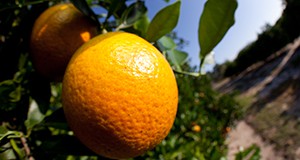
Weed management is an important component of citrus production. The selection and implementation of a weed management program can lead to both economic and environmental returns. This three-page fact sheet details how to manage weeds in both young and mature groves, the differences in weed control programs between interior areas and coastal or flatwoods areas, how to control weeds after a freeze, and common ways that herbicides are misused. Written by Stephen H. Futch and Brent Sellers, and published by the Horticultural Sciences Department.
http://edis.ifas.ufl.edu/ch084
Freeze Damage Symptoms and Recovery for Citrus

Citrus trees are evergreen, never become fully dormant, and cannot withstand temperatures as low as those tolerated by deciduous trees. But citrus trees can become preconditioned or acclimated to cool air temperatures that occur in late fall and winter. One of the best ways to lessen cold injury and to hasten recovery from cold damage is to maintain healthy trees. This five-page fact sheet discusses the symptoms of freeze damage and ways to help recover trees that have been damaged. Written by Mongi Zekri, Chris Oswalt, Steve Futch, Gary England, Camilly McAvoy, Laurie Hurner, and Parker Platts, and published by the Horticultural Sciences Department.
http://edis.ifas.ufl.edu/hs1250

